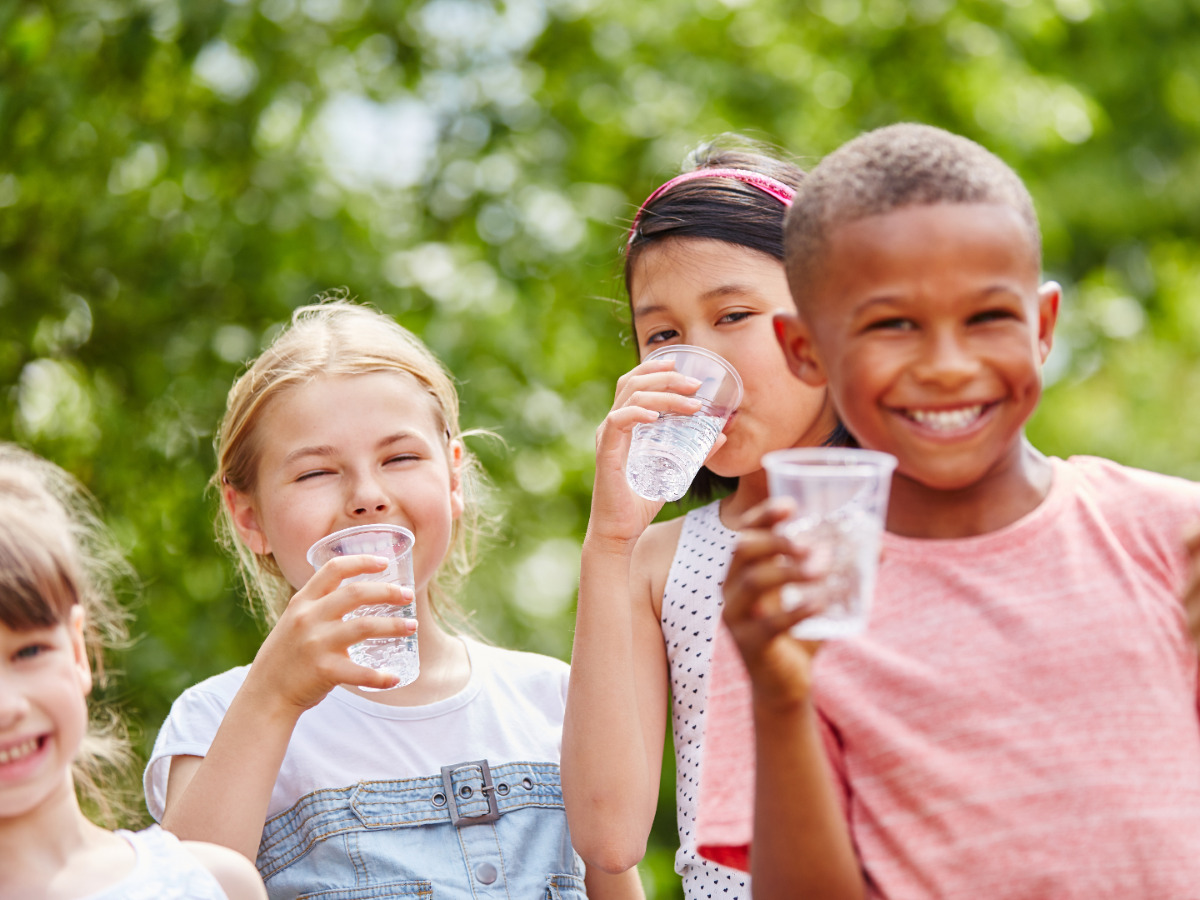Staying Hydrated in the Summer
Institute of Child Nutrition (ICN)
August 7, 2025

Summer is well underway! To prepare children for the heat, ensure drinking water is available and offer it throughout the day as they engage in outdoor playtime. Our partners at the Institute of Child Nutrition provide benefits of drinking water, recommendations for water intake, signs of dehydration, and drinks to avoid.
Benefits of Drinking Water
Drinking water is not only healthy—it has zero calories and no added sugar—but also economical. Tap water is much less expensive than sports drinks, soda, bottled water, and juice. Drinking enough water each day is also crucial for the following reasons:
- Regulates body temperature
- Helps with weight maintenance
- Keeps joints lubricated
- Helps with blood circulation
- Prevents infections, dehydration, constipation, and tooth decay
- Delivers nutrients to cells and keeps organs functioning properly
- Improves sleep quality, memory, attention, and mood
Fluid Intake Recommendations
The American Academy of Pediatrics recommends the following daily intake of fluids (including water or milk):
- Infants: During the first 6 months, breast milk or formula provides all the fluid infants need. Once solids are introduced, infants can have small amounts of plain water in a cup. In hot weather, extra breast milk or formula can help keep infants hydrated. Always check with parents or guardians about how much and how often to offer water.
- Children ages 1–3 years: 4 cups
- Children ages 4–8 years: 5 cups
- Children ages 9–13 years: 7–8 cups
Hydration can come from various sources, including water, milk, and food. To get the most hydration, choose “juicy” fruits and vegetables like cucumbers, zucchini, iceberg lettuce, celery, tomatoes, watermelon, cantaloupe, strawberries, oranges, grapes, peaches, and grapefruit.
Hot Weather and Physical Activity
Children need extra water to drink when physically active or when it is hot outside. Water lost from sweat needs to be replaced to avoid dehydration. During physical activity (especially on hot days), ensure children drink frequently, even if they say they are not thirsty. Always have water available and schedule water breaks every 15 to 20 minutes during outdoor play. Infants and young children may not be able to recognize their need for fluids, so it’s critical to provide frequent fluid intake and keep an eye out for symptoms of dehydration.
Signs of Dehydration
Watch children closely for signs of dehydration, which differ by age group:
- Infants and toddlers: irritability, overly sleepy, no tears when crying, fewer wet diapers, dry mouth and tongue, a sunken soft spot on top of their head
- Older children: fatigue, dry lips and tongue, low energy, flushed skin
- Teens: dizziness, headaches, cramps, confusion, rapid pulse, excessive thirst
Beverages to Avoid
Limit 100% juice and avoid sugar-sweetened beverages like juice drinks, lemonade, soda, and sports drinks. These drinks often contain added sugars, caffeine, or artificial sweeteners. Due to the added sugars, these beverages can train children to expect sweetness in their drinks and discourage consuming plain water.
Added sugars can lead to excess weight gain, dental cavities, diabetes, and more. Low- and no-calorie sweeteners are not recommended for children younger than age two years. Sports drinks are helpful for highly intense activity that lasts longer than one hour. In regular play, water is sufficient to rehydrate the body.
For even more information, check out ICN’s August Mealtime Memo.
